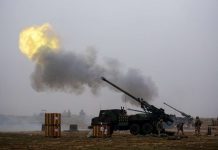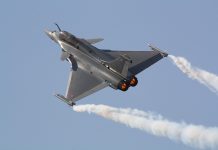
Unmanned Ukrainian surface vessels conducting night raids have emerged as a significant operational challenge for the Russian Black Sea Fleet, resulting in notable losses. These nocturnal assaults capitalize on reduced visibility and lower crew readiness levels, leading to a higher success rate for Ukrainian attacks.
Recognizing the effectiveness of these tactics, Moscow is actively seeking thermal imaging systems to enhance the fleet’s defenses. Denis Oslomenko, General Director of the PPSH Laboratory, highlights the urgent need for such technology to mitigate the threat posed by Ukrainian surface attacks. While thermal imaging systems may not entirely neutralize these assaults, they are expected to significantly reduce their success rate.
The Defense Forces of Ukraine employ various unmanned surface kamikaze vehicles to target Russian ships, causing considerable damage and demonstrating the vulnerability of sophisticated military assets to relatively low-cost means of warfare.
Oslomenko advocates for the deployment of thermal imaging binoculars on deck watches to provide early detection and alert mechanisms against approaching hostile vessels, thereby enabling proactive defense measures.
In response to these threats, the Russian Federation has conducted training exercises, notably in the Pacific Ocean, to prepare for potential attacks by Ukrainian kamikaze boats. These drills involve a significant fleet presence, including advanced corvettes like the Rezky, and emphasize the use of machine guns and assault rifles to counter unmanned threats.
Recent observations indicate the integration of older weaponry such as the DShK machine gun alongside conventional machine guns in the Russian Navy’s strategy to combat drone threats, underscoring the adaptability and resourcefulness required in modern naval warfare.
While every soldier aboard a ship plays a crucial role in safeguarding its integrity, the choice of weaponry raises questions, particularly regarding the utilization of Kalashnikov assault rifles despite the presence of advanced rapid-fire artillery systems like the AK-630.
The AK-630 is a formidable 30-mm automatic cannon, capable of unleashing up to 5,000 rounds per minute. Integrated into a unified combat control system equipped with its radar and the Puma 5P-10 fire control system, this sophisticated Russian technology enables simultaneous tracking of up to four targets while providing automated control over multiple shipboard artillery installations.
It’s noteworthy that even in the Russian Federation’s Pacific Fleet, which boasts modern vessels like the Project 20380 corvettes delivered between 2017 and 2023, there’s a reliance on dated weaponry like the DShK machine gun.
Furthermore, recent footage underscores the use of vertical takeoff and landing UAVs for scouting marine drones, a practice commonly observed on contemporary Russian ships, especially corvettes, where these UAVs complement Ka-27 helicopters. Meanwhile, Ukraine continues to advance its surface drone capabilities, evident in the recent outfitting of Magura V5 boats with R-73 missiles, marking a significant milestone in maritime warfare. This development signifies the first documented use of a multi-role maritime drone in combat, setting precedence globally. With this technological progress, Ukraine’s Defense Forces are edging closer to not only launching swarm attacks with marine kamikaze drones but also defending them with multi-purpose unmanned cutters, potentially intensifying pressure on the Russian Black Sea navy.





